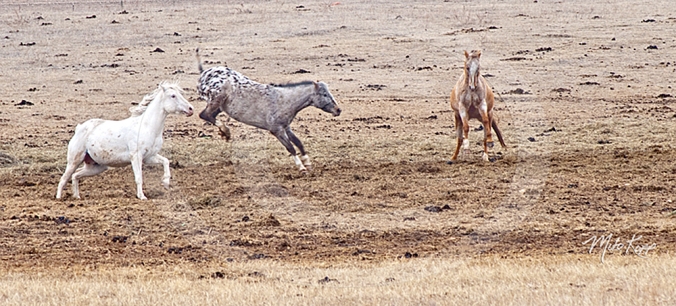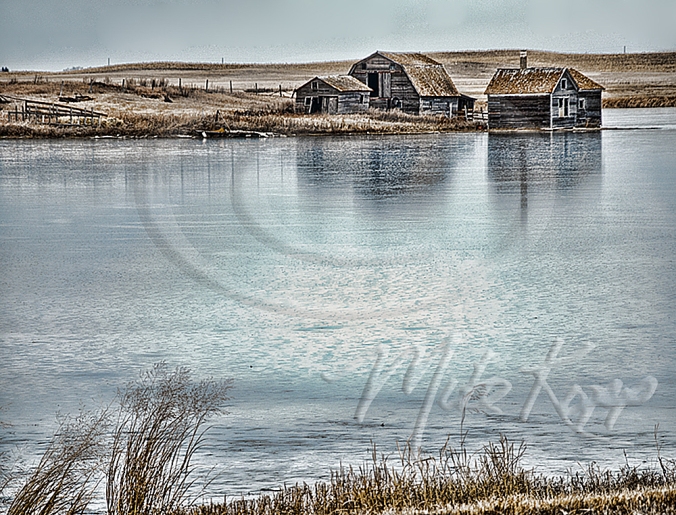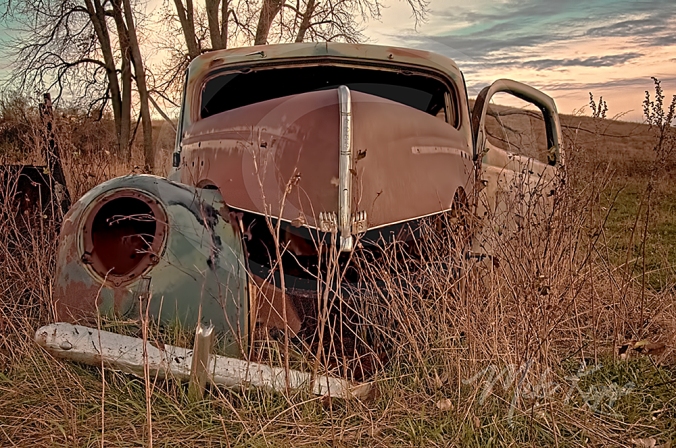
Domesticated sunflowers never rotate with the sun unlike their natural cousins that follow the sun. That’s why this mature field of sunflowers face east with the sun at their back. (One reason I like this photo, besides the leading lines is the hot/cold contrast of ground color and sky color.)
This fall, I’ve taken to exploring the last hour of the day with camera and dog. That’s easy to do because the golden hour is actually pretty early these autumn days; the colors are warm and the contrasting light is illuminating. The golden hour, the golden sunset and the golden colors are striking.

Gunnar the foster dog leaps through tall prairie grasses on our walks. The golden grass, yellow skies and his yellow fur compliment each other
About 4:00 or so, the dog gets pretty alert and by 5:00, he’s ready to go. He’ll pace back and forth or stand by the back door until I am ready. Then he gets to the truck to wait for me, and off we go to find an abandoned section line road to explore.

Even just eight wind turbines disrupt the horizon. Imagine what 105 turbines do to the landscape.
Up until about 8 years ago, there were more opportunities, but more than 100 wind turbines were set up south and east of me. There’s not much enjoyment in shooting miles and miles of wind turbines. I find them to be intrusive. So to avoid the wind turbines, now I explore west and north of Wilton, mostly north. There are not too many golden hour opportunities to the west. The Missouri River is about 8 miles from me, the hills and valleys separate section line roads. I stick to roads and section line paths, staying off private property, so there are not many chances to get out and photograph the area without trespassing on a farmer’s property. I’ve been heading north of Wilton where there are more gravel roads and abandoned section line roads.
Our routine is similar each night. We drive until we find a good place to stop, then walk, looking for patterns, images to capture. Well, I look for them. The dog, he’s just off running. It’s his free time.
Sometimes we come across a surprising revelation. In this case (photo below), we parked the truck, hiked up over the hill and caught the lower valley beyond the hill. An abandoned house with no noticeable roads or lanes nearby, just sitting in the middle of a small grain stubble field.
Other times we walk along a yet-to-be harvested field. As I noted above, sunflowers are some of the last to come off, weeks after small grains and beans.

Hauling roughly a half-semi trailer of grain, a powerful John Deere on tracks not wheels heads to the working combine to unload the combine hopper as it keeps moving down the rows.
Sometimes we’ll be headed down a trail, and can hear the sound of million-dollars of machinery working. Fields are so large that farmers need a grain cart pulled by a high-powered tractor to collect the grain from the working combine out in the field, and then haul it to the end of the field and a waiting truck.
Drive or walk to the other end of the section and you’ll come up on the combine doing it’s season-ending work. .
It’s not too profound of a statement to say that this is an agricultural area, but that does not mean there are not opportunities to get in to wildlife regions. I’ll see what I can do to show you that, next time. Do you have fall hiking areas in North Dakota that you can recommend? What are section line roads like in your area?

Between the rancher’s fence lines is what used to be an active road, a section line road laid out on every section on one-mile grids. Most are no longer accessible or visible.






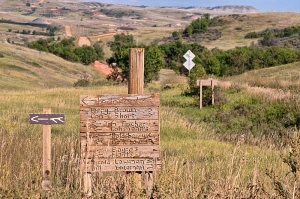






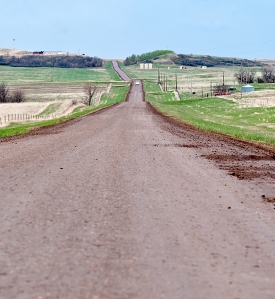
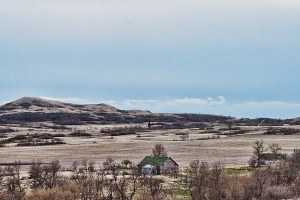
 Our mission was to photograph a seasonal transition, capturing the change from early spring’s dormant brown to the more lively green. A few hints of spring met us along the slope such as the wildflowers sprouting ahead of the green grass.
Our mission was to photograph a seasonal transition, capturing the change from early spring’s dormant brown to the more lively green. A few hints of spring met us along the slope such as the wildflowers sprouting ahead of the green grass.



 We stopped to see if the white mare and black cold would get closer. We were between them and the water — their apparent goal. Mom
We stopped to see if the white mare and black cold would get closer. We were between them and the water — their apparent goal. Mom  protected her babe, so they skirted around us. We stopped, watched and photographed their patient easy stroll past us. They disappeared over the hill.
protected her babe, so they skirted around us. We stopped, watched and photographed their patient easy stroll past us. They disappeared over the hill.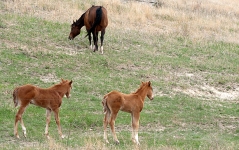

 We’d met our goal. We’d captured signs of spring in the beautiful Bakken region of North Dakota where nature underground is yielding a harvest of plenty and where nature above the ground displays the beauty we’ve come to see.
We’d met our goal. We’d captured signs of spring in the beautiful Bakken region of North Dakota where nature underground is yielding a harvest of plenty and where nature above the ground displays the beauty we’ve come to see.


